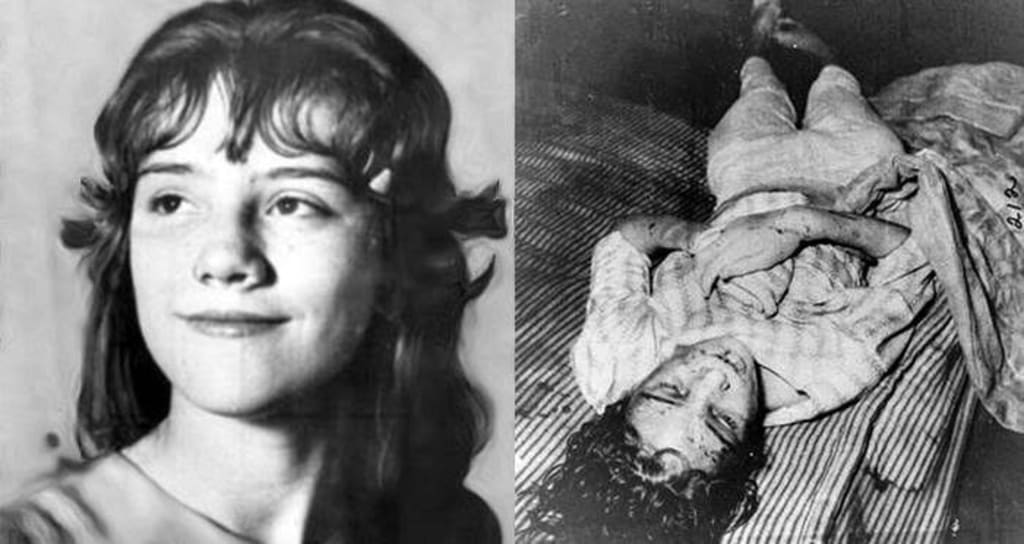Tortured and Murdered by Caretakers
The tragic case of Sylvia Likens, tortured and murdered by her caretakers in 1965, serves as a horrifying example of human cruelty and the dangers of unchecked power.

The tragic case of Sylvia Likens stands as a harrowing example of human cruelty and the devastating consequences that can arise when individuals abuse their power and neglect their responsibilities. Sylvia Likens was a 16-year-old girl who endured unimaginable suffering and was ultimately murdered by her caretakers, Gertrude Baniszewski and her children, in 1965. This distressing incident sheds light on the capacity for evil that exists within some individuals and serves as a stark reminder of the importance of protecting the vulnerable.
Sylvia's ordeal began when she was left in the care of Gertrude Baniszewski, a woman whom Sylvia's parents believed would provide a safe environment for her while they were traveling. Unfortunately, this trust was gravely misplaced. Over the course of several months, Sylvia endured relentless physical and emotional abuse at the hands of not only Gertrude but also several of Gertrude's children and neighborhood youths. The extent of the torture Sylvia experienced is difficult to comprehend: she was beaten, burned, starved, and subjected to humiliation and degradation on a daily basis.
One of the most disturbing aspects of this case was the involvement of Gertrude's own children in the torture and eventual murder of Sylvia. This highlights the power dynamics at play and the disturbing influence that authority figures can exert over their own offspring. It is suggested that fear, manipulation, and a warped sense of loyalty contributed to the children's participation in Sylvia's suffering. The case serves as a chilling example of how a toxic environment can lead individuals to commit unspeakable acts under the influence of those in positions of authority.
As Sylvia's physical condition deteriorated, so did her mental and emotional well-being. She was isolated from her peers and unable to seek help or escape her tormentors. The neighborhood youths who were involved in her abuse further exacerbated her suffering, turning her into a scapegoat for their own sadistic pleasures. This highlights the alarming phenomenon of group dynamics that can arise when individuals are swept up in a cycle of cruelty, each feeding off the malevolence of the others.
Tragically, Sylvia's ordeal came to a fatal end in October 1965. Severely malnourished, covered in burns and bruises, she succumbed to the abuse and died from a combination of physical injuries and neglect. The discovery of her body shocked the community and led to the arrest of Gertrude Baniszewski, her children, and the neighborhood youths involved. The subsequent trial exposed the horrific details of Sylvia's suffering and the depths of human depravity that had been present within the walls of the Baniszewski household.
The case sparked outrage and disbelief across the nation, prompting soul-searching conversations about the responsibility of society to protect its most vulnerable members. Sylvia's tragic story has since become a symbol of the need for vigilance against abuse, neglect, and the dangers of turning a blind eye to the suffering of others. The impact of her death was a catalyst for changes in child protection laws and attitudes towards reporting abuse.
In conclusion, the story of Sylvia Likens is a haunting reminder of the darkness that can exist within some individuals and the potential for cruelty that can arise in certain circumstances. Her torture and murder at the hands of her caretakers and peers reveal the devastating consequences of unchecked power, manipulation, and the absence of empathy. Sylvia's story serves as a call to action for society to be vigilant in protecting the vulnerable and to recognize the signs of abuse and neglect. It is a testament to the importance of fostering a culture of compassion, empathy, and responsibility, and to never forget the tragic consequences of failing to do so.
About the Creator
Enjoyed the story? Support the Creator.
Subscribe for free to receive all their stories in your feed. You could also pledge your support or give them a one-off tip, letting them know you appreciate their work.





Comments
There are no comments for this story
Be the first to respond and start the conversation.